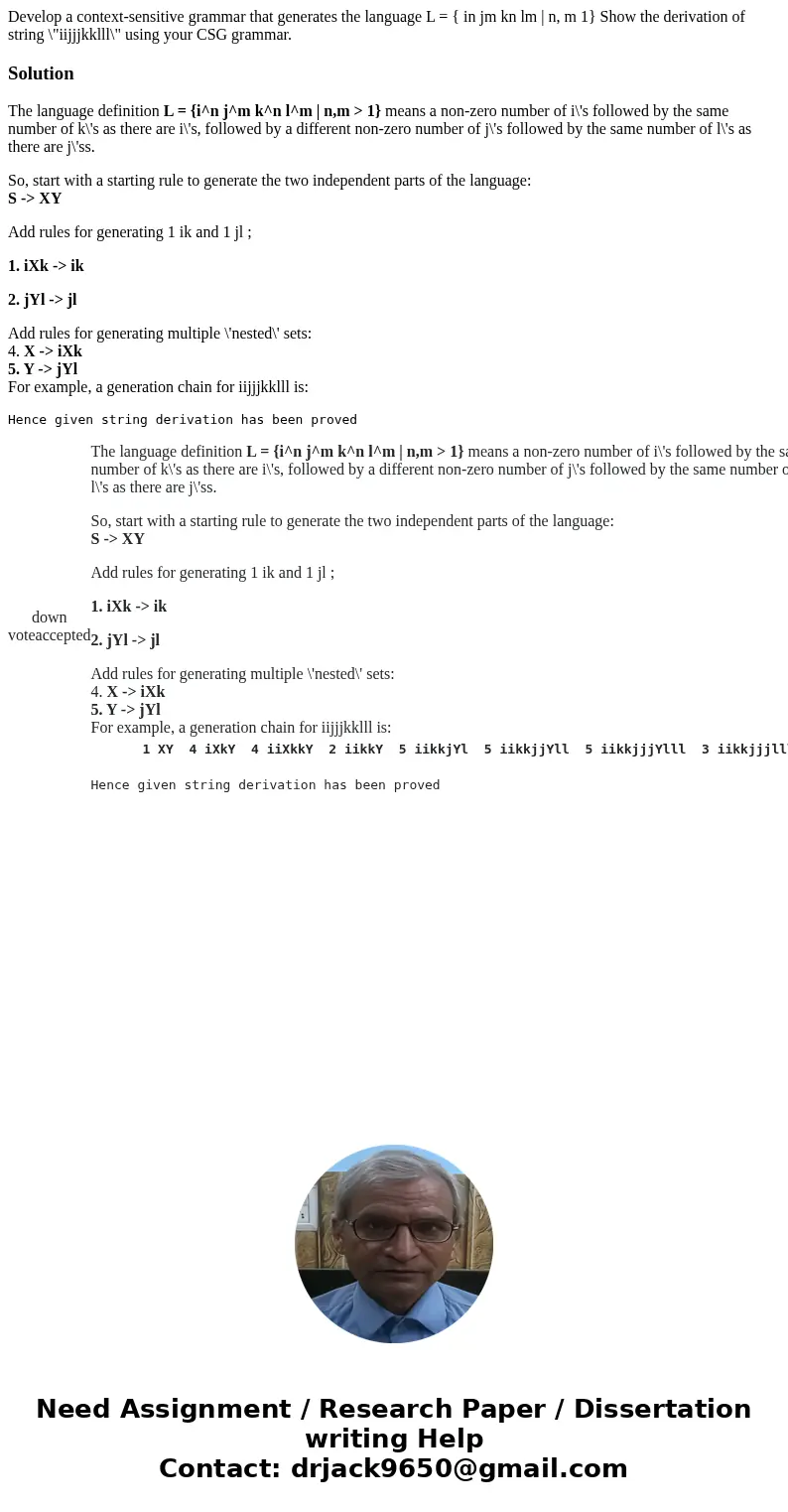Develop a context-sensitive grammar that generates the language L = { in jm kn lm | n, m 1} Show the derivation of string \"iijjjkklll\" using your CSG grammar.
The language definition L = {i^n j^m k^n l^m | n,m > 1} means a non-zero number of i\'s followed by the same number of k\'s as there are i\'s, followed by a different non-zero number of j\'s followed by the same number of l\'s as there are j\'ss.
So, start with a starting rule to generate the two independent parts of the language:
S -> XY
Add rules for generating 1 ik and 1 jl ;
1. iXk -> ik
2. jYl -> jl
Add rules for generating multiple \'nested\' sets:
4. X -> iXk
5. Y -> jYl
For example, a generation chain for iijjjkklll is:
Hence given string derivation has been proved
| | The language definition L = {i^n j^m k^n l^m | n,m > 1} means a non-zero number of i\'s followed by the same number of k\'s as there are i\'s, followed by a different non-zero number of j\'s followed by the same number of l\'s as there are j\'ss. So, start with a starting rule to generate the two independent parts of the language: S -> XY Add rules for generating 1 ik and 1 jl ; 1. iXk -> ik 2. jYl -> jl Add rules for generating multiple \'nested\' sets: 4. X -> iXk 5. Y -> jYl For example, a generation chain for iijjjkklll is: 1 XY 4 iXkY 4 iiXkkY 2 iikkY 5 iikkjYl 5 iikkjjYll 5 iikkjjjYlll 3 iikkjjjlll Hence given string derivation has been proved
|
 Homework Sourse
Homework Sourse
